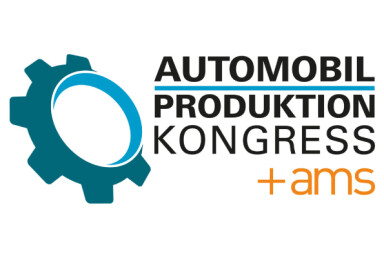Plant closure
Nissan-Mercedes JV shuts Mexican plant amid tariff storm

The COMPAS facility in Aguascalientes will close in May 2026, ending a decade-long partnership between two automotive giants as trade pressures and Nissan's financial crisis reshape North American manufacturing.
The Cooperation Manufacturing Plant Aguascalientes (COMPAS), a joint venture between Nissan and Mercedes-Benz, will cease operations on 31 May 2026, bringing an end to what was once heralded as a landmark partnership in premium vehicle manufacturing. The closure, confirmed in a letter to suppliers, reflects the convergence of multiple pressures reshaping the North American automotive landscape.
The facility, which currently employs approximately 800 workers, produces the Infiniti QX50 and QX55, as well as the Mercedes-Benz GLB, primarily for export to the United States and Canada. Production will wind down in phases, with Infiniti models scheduled to end in November 2025, whilst Mercedes-Benz assembly will continue until May 2026.
A billion-dollar gamble unravels in Mexico's automotive heartland
COMPAS was established in 2015 as a joint venture between Daimler and the Renault-Nissan Alliance, with an initial investment of $1 billion. The ambitious project was designed to capitalise on Mexico's established supplier base and Nissan's manufacturing expertise in Aguascalientes, where the Japanese automaker has operated since 1992.
The facility spans approximately 110 hectares and has a production capacity exceeding 230,000 vehicles per year. At its peak, COMPAS created around 3,600 direct jobs, with additional thousands employed indirectly through the supply chain. The plant represented Mercedes-Benz's first production location for compact cars in the NAFTA region, symbolising the German manufacturer's commitment to expanding its North American footprint.
Yet the promise of cross-border collaboration in premium manufacturing has collided with harsh economic realities. In its statement, the company cited changes in automotive market dynamics and consumer preferences as driving factors. "COMPAS reaffirms its full financial strength and payment capacity, which allows us to guarantee ordinary operations as previously agreed. All our contractual commitments will be fulfilled on time and in accordance with current commercial agreements," the company stated.
Nissan's restructuring leaves 800 workers facing uncertain future
The COMPAS closure forms part of Nissan's broader Re:Nissan recovery plan, an aggressive restructuring programme announced in May 2025. The company plans to reduce its workforce by a total of 20,000 employees between the financial years 2024 and 2027, and will close seven of its 17 production facilities worldwide as part of efforts to streamline operations and improve cost-efficiency.
Nissan President and CEO Ivan Espinosa stated that the company must act urgently in light of challenging FY24 performance and inflationary pressures. The automaker reported a net loss of $4.5 billion for the fiscal year ending March 2025, marking one of the worst financial performances in its modern history.
The Re:Nissan plan seeks to achieve total cost savings of 500 billion yen ($3.4 billion) versus fiscal year 24 actuals in fixed and variable cost savings. Nissan will consolidate its vehicle production plants from 17 to 10 by fiscal year 2027, with Mexico bearing a significant portion of the burden. The company has already confirmed the closure of its historic CIVAC plant near Cuernavaca, Morelos, which opened in 1966 as Nissan's first factory outside Japan.
For the 800 workers at COMPAS, the closure represents a profound disruption. Whilst some may find opportunities at other automotive facilities in Aguascalientes, which hosts multiple Nissan operations and a developed supplier network, the loss of premium manufacturing jobs carries implications beyond immediate employment. The plant was developed to meet exacting standards for luxury vehicles, requiring specialised technical training that created a skilled workforce now facing uncertain prospects.
Tariffs and market shifts expose vulnerabilities in premium manufacturing
The timing of the COMPAS closure cannot be divorced from the broader context of US trade policy. In March 2025, President Trump announced 25% tariffs on goods that do not satisfy US-Mexico-Canada Agreement (USMCA) rules of origin, though these were subsequently adjusted to minimise disruption to the automotive industry.
Analysts at Bernstein Research estimate that 25% tariffs on both countries would be a headwind of up to $110 million per day for the auto industry. For manufacturers like Nissan, already grappling with financial distress, such pressures compound existing vulnerabilities. The company exports approximately 320,000 units annually from Mexico to the United States, making it particularly exposed to tariff-related costs.
The COMPAS facility, producing premium vehicles for the North American market, faced the dual challenge of maintaining competitiveness whilst absorbing potential tariff costs. Unlike high-volume mainstream models, luxury vehicles operate on tighter margins and must meet consumer expectations for quality and specification that leave little room for cost absorption. The Mercedes-Benz GLB and Infiniti crossovers produced at COMPAS were designed to compete in segments where brand perception and pricing precision matter enormously.
Market dynamics have also shifted dramatically. Consumer preferences in North America have evolved, with demand for traditional luxury sedans declining in favour of SUVs and crossovers. Yet even within these segments, competition has intensified. Chinese manufacturers have demonstrated their ability to produce technologically sophisticated vehicles at lower cost points, whilst established premium brands face pressure to invest heavily in electrification and digital capabilities.
The COMPAS closure signals deeper industry transformation
The end of COMPAS reflects broader questions about the viability of joint ventures in an industry undergoing fundamental transformation. The partnership between Daimler and the Renault-Nissan Alliance was predicated on sharing development costs and production capacity to achieve economies of scale in premium compact vehicles. Yet the rapid pace of technological change, particularly in electrification and autonomous systems, has altered the arithmetic of such collaborations.
Nissan has cancelled the planned LFP battery plant in Kyushu and temporarily paused advanced and post-FY26 product activities, reallocating 3,000 employees to focus on cost-reduction initiatives. These moves signal a company in survival mode, prioritising immediate financial stability over long-term strategic partnerships. For Mercedes-Benz, the decision to exit COMPAS may reflect a recalibration of its North American manufacturing strategy in light of shifting trade dynamics and the need to concentrate resources on its electrification push.
The closure also points to Mexico's vulnerability within the North American automotive supply chain. Despite decades of investment and development, Mexican manufacturing remains subject to political winds and policy shifts in Washington. The country exported three million tonnes of steel in 2024, with 2.3 million tonnes destined for the United States, while the automotive sector represents 31.4% of Mexico's total export revenue, making it critically dependent on stable trade relationships that have proven elusive under recent US administrations.
The COMPAS closure may presage further consolidation in automotive manufacturing. Nissan is reducing parts complexity by 70%, whilst the integration and optimisation of platforms will decrease the number of platforms from 13 to 7 by fiscal year 2035. Such rationalisation across the industry suggests that facilities unable to achieve high utilisation rates or demonstrate clear competitive advantages face existential risk.
The workers, suppliers, and communities that depended on COMPAS now confront a future shaped by forces beyond their control. What began in 2015 as a move towards cross-border cooperation in premium manufacturing stands still a decade later as a casualty of trade tensions, corporate restructuring, and the automotive industry's painful transition to an electrified, digitally connected future. The plant's closure exemplified how quickly collaborative ventures can unravel when economic fundamentals shift and strategic priorities diverge.







